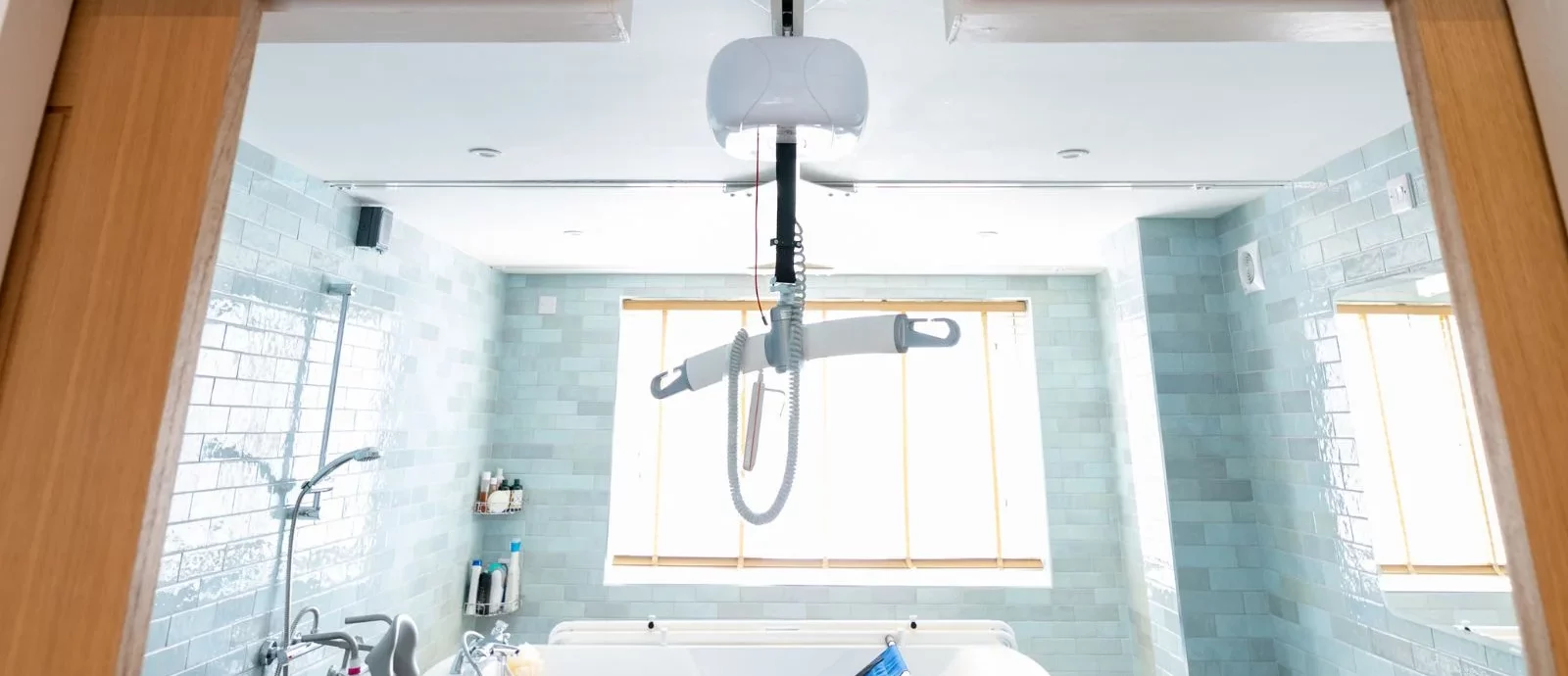Ceiling Track Hoists: Frequently Asked Questions
Posted on 15 November 2017 By Aaron Stretton

In This Article
We’re pretty much experts in ceiling track hoists, so we often get calls and emails from architects and specifiers who…
We’re pretty much experts in ceiling track hoists, so we often get calls and emails from architects and specifiers who are wanting to know the finer details of fixings, layouts, and various other bits and bats. So, we wanted to put together a short blog post that can hopefully answer any queries we usually deal with, giving you a greater understanding of ceiling track hoists and all they entail.
1/ How do you install a ceiling track hoist?
This depends on a lot of things; the layout of the room, the hoist system that’s been chosen, and the structure of the building itself. It also depends on whether you are using inset tracking, you’re hanging the ceiling track.
A general overview of the installation process is that we use Unistrut which spans or attaches to wooden joists and concrete for a ceiling-mounted system. For a wall-mounted system, we use the same method.
For a more in-depth look at how we install different types of hoisting systems, check out this blog post.
2/ How much space should I leave between track fixings?
First and foremost, we always recommend getting in touch with a hoist specialist to discuss this. Different hoist systems and track components will require different fixing distances, and various user weights will also change this.
For example, bariatric users will exert more force on the hoist unit and ceiling track, and so the fixings would be installed closer together to reinforce the track itself and provide greater safety and stability for the user. People who weigh significantly less will not put as much force on the hoisting system, which gives us more room to spread the fixings.
The higher the weight limit of the hoist unit, the less space we put between track fixings.
3/ Can hoists be used in damp environments, like over swimming or hydrotherapy pools?
They most certainly can! All our hoist units and track can be installed in humid rooms with no worries about it causing rust or malfunction. When you come to us with an enquiry, we can talk you through the difference between installing a hoist in a dry environment compared to when you install it in a wet one.
We use specially coated PCB boards and components for the hoist unit itself. This will protect it from moisture.
We also recommend that you use an infra-red handset for the hoist unit where possible, which will help to avoid any electrical mishaps or accidents that may happen with a wired controller. It is important to note that the handset is not waterproof — so please don’t submerge it in water.
Our CAD team and project managers adhere to all IEE guidelines when planning the electrical outputs.
4/ How do you test the weight limit of the hoist?
Our installation team will always test the weight limit of the hoist once the installation is complete. We check that our hoist systems can comfortably lift up to 1.5 times the safe working load, giving the client a little bit of overhead room for flexibility and peace of mind.
This will also be tested every time we service the hoist system.
5/ Where should the hoist pick-up points be?
Pick-up points are locations within a room where the hoist will be most frequently lifting and lowering individuals. This varies from room to room.
Understandably, the pick-up points in a bathroom (the toilet, the bath, a changing bench) will be different from those in a bedroom (the bed, a chair, etc.). You can find out more details about our suggested measurements surrounding pick-up points in The Specifier’s Guide to Healthcare Environments.
6/ Do all hoist companies install Innova products and hoist systems?
No Innova products and systems are only installed by our engineers who have been extensively trained and tested in everything to do with these hoists. Only our installation team and engineers are permitted to install our products, and this is to ensure that the finished result is completely up-to-scratch and safe for the end user(s).
7/ Do hoist systems need power supplies?
Our hoist systems run on electricity, so will understandably require a power supply.
Our hoist units, turntables, track switches, transit couplings and other various components all require a 24V power supply. Again, we can assist with this from the get-go, recommending electrical layouts and fixings that will best suit the hoist and the environment.
Summary
We hope that these answer your questions on our hoisting systems, but we are more than happy to help you with any questions or concerns you may have. Feel free to contact us through our website, by phone, or by email, and we can advise you on the best solutions for your project.
Speak to The Experts
Need assistance with product enquiries, general inquiries, or product support? Our Phonelines are open 9am - 5pm Monday to Friday
0113 519 0319
Or, fill out the form for a call back.
